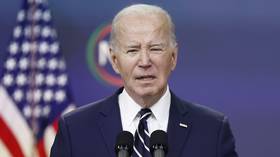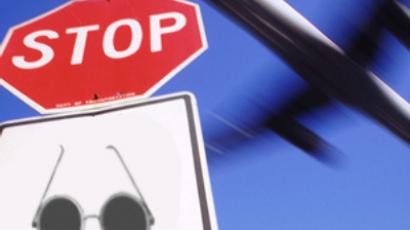The wrong arm of the law: Indian police get brutal
The reputation of India’s police is being heavily tarnished with officers bypassing the law to get results through extra-judicial violence, known as “false encounters”, often leading to the death of alleged suspects.
Indian weekly magazine “Tehelka” recently caused a storm by publishing photos of, what it says, was an unarmed former militant being executed by police in the state of Manipur.
“The series of pictures shows him being surrounded by policemen in the bazaar, and then he’s taken into a pharmaceutical shop, and a few minutes later his dead body comes out,” Editor-in-Chief Tarun Tejpal said.
“At no point in the series of pictures does it look like he’s resisting the policemen. The cops know they will get away with it. If the system actually nailed three or four policeman who are involved with ‘false encounters’, you would find they would stop,” the editor believes.
The so-called “false encounters” do not appear to be random acts of violence. Officers are under pressure to perform, and “encounters” are often an easy way to make up the numbers, said Kiran Bedi, who was the highest-ranked woman police officer in India before she retired in 2007.
“Let’s say in ten cases you eliminated six gangsters, but you also eliminate another four to get rewards, recognition, out-of-turn promotions,” said the former Director General of India's Bureau of Police Research and Development turned social activist.
“You get into one illegal act and you look the other way. Your junior can do five others – how would you look at it then? So it’s not one method of policing – it’s not policing by law, it’s policing by expediency,” Bedi concluded.
Tejpal believes that what lies behind this problem is the general situation in the country:
“You have 200 million Indians who have an increasingly better way of life. You have maybe ten million who are really well off. You have one million who count among the richest in the world. But you also have 700-800 million Indians who live at poverty levels worse than sub-Saharan Africa.”
According to Tejpal, police brutality is just one of the symptoms of this unequal nature of India.
“Its primary job is to carry out the instructions of its political masters.”
India’s police force is considered overstretched and ill-equipped, with just one officer for every 1,000 people according to a UN survey.
In spite of the police violence, the uniform remains a powerful symbol. In fact, in the state of Bihar, protestors have demanded jobs in the force as they are, after all, government jobs and are much sought after.
In spite of India’s image as a democracy, the rule of law continues to be disproportionate. Until the state holds a mirror in front of itself, India’s police will remain unaccountable for their violent actions.













